M. Monir Uddin
Pioneering Precision in Lumbar Spine MRI Segmentation with Advanced Deep Learning and Data Enhancement
Sep 09, 2024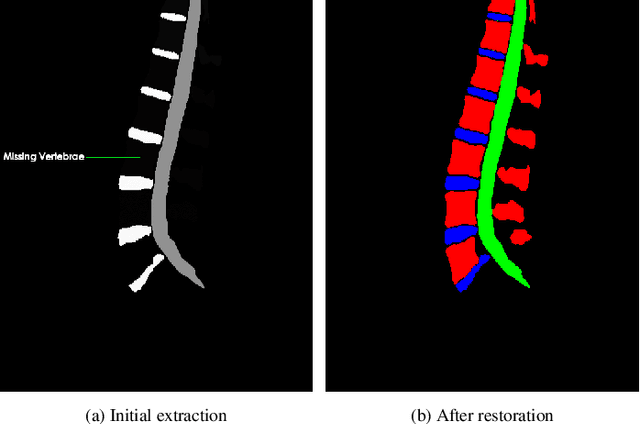
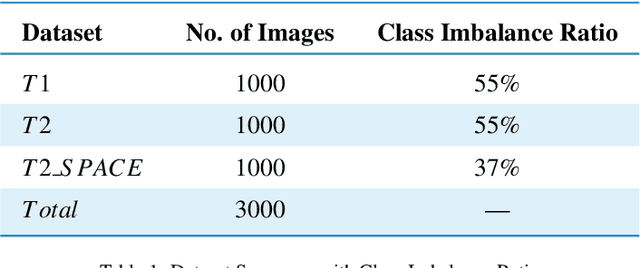
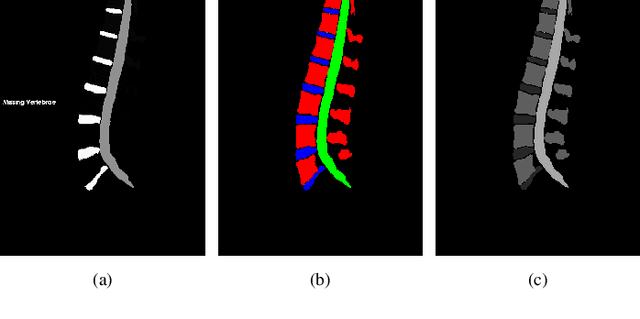
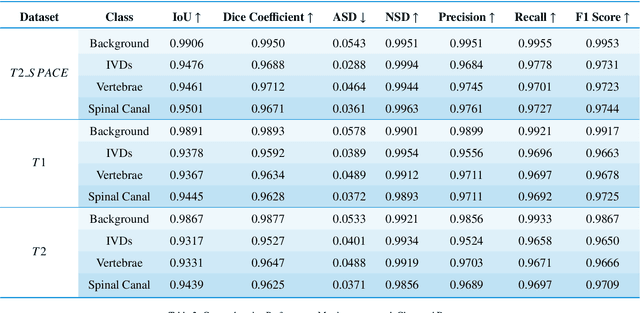
Abstract:This study presents an advanced approach to lumbar spine segmentation using deep learning techniques, focusing on addressing key challenges such as class imbalance and data preprocessing. Magnetic resonance imaging (MRI) scans of patients with low back pain are meticulously preprocessed to accurately represent three critical classes: vertebrae, spinal canal, and intervertebral discs (IVDs). By rectifying class inconsistencies in the data preprocessing stage, the fidelity of the training data is ensured. The modified U-Net model incorporates innovative architectural enhancements, including an upsample block with leaky Rectified Linear Units (ReLU) and Glorot uniform initializer, to mitigate common issues such as the dying ReLU problem and improve stability during training. Introducing a custom combined loss function effectively tackles class imbalance, significantly improving segmentation accuracy. Evaluation using a comprehensive suite of metrics showcases the superior performance of this approach, outperforming existing methods and advancing the current techniques in lumbar spine segmentation. These findings hold significant advancements for enhanced lumbar spine MRI and segmentation diagnostic accuracy.
Optimizing Universal Lesion Segmentation: State Space Model-Guided Hierarchical Networks with Feature Importance Adjustment
Apr 26, 2024



Abstract:Deep learning has revolutionized medical imaging by providing innovative solutions to complex healthcare challenges. Traditional models often struggle to dynamically adjust feature importance, resulting in suboptimal representation, particularly in tasks like semantic segmentation crucial for accurate structure delineation. Moreover, their static nature incurs high computational costs. To tackle these issues, we introduce Mamba-Ahnet, a novel integration of State Space Model (SSM) and Advanced Hierarchical Network (AHNet) within the MAMBA framework, specifically tailored for semantic segmentation in medical imaging.Mamba-Ahnet combines SSM's feature extraction and comprehension with AHNet's attention mechanisms and image reconstruction, aiming to enhance segmentation accuracy and robustness. By dissecting images into patches and refining feature comprehension through self-attention mechanisms, the approach significantly improves feature resolution. Integration of AHNet into the MAMBA framework further enhances segmentation performance by selectively amplifying informative regions and facilitating the learning of rich hierarchical representations. Evaluation on the Universal Lesion Segmentation dataset demonstrates superior performance compared to state-of-the-art techniques, with notable metrics such as a Dice similarity coefficient of approximately 98% and an Intersection over Union of about 83%. These results underscore the potential of our methodology to enhance diagnostic accuracy, treatment planning, and ultimately, patient outcomes in clinical practice. By addressing the limitations of traditional models and leveraging the power of deep learning, our approach represents a significant step forward in advancing medical imaging technology.
A Novel Non-Invasive Estimation of Respiration Rate from Photoplethysmograph Signal Using Machine Learning Model
Feb 18, 2021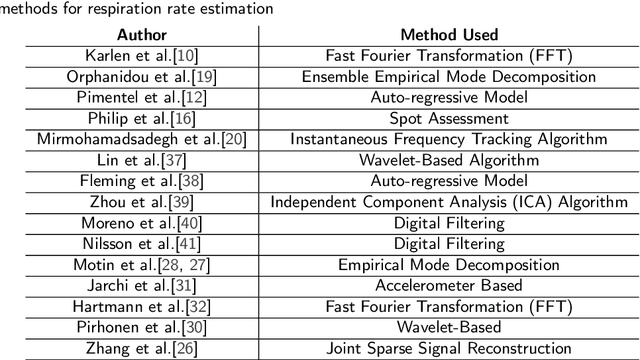


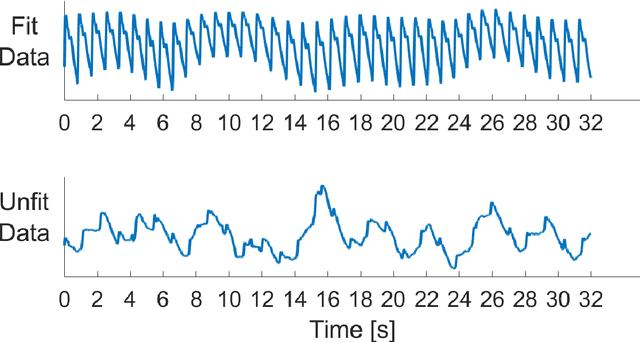
Abstract:Respiratory ailments such as asthma, chronic obstructive pulmonary disease (COPD), pneumonia, and lung cancer are life-threatening. Respiration rate (RR) is a vital indicator of the wellness of a patient. Continuous monitoring of RR can provide early indication and thereby save lives. However, a real-time continuous RR monitoring facility is only available at the intensive care unit (ICU) due to the size and cost of the equipment. Recent researches have proposed Photoplethysmogram (PPG) and/ Electrocardiogram (ECG) signals for RR estimation however, the usage of ECG is limited due to the unavailability of it in wearable devices. Due to the advent of wearable smartwatches with built-in PPG sensors, it is now being considered for continuous monitoring of RR. This paper describes a novel approach to RR estimation using machine learning (ML) models with the PPG signal features. Feature selection algorithms were used to reduce computational complexity and the chance of overfitting. The best ML model and the best feature selection algorithm combination was fine-tuned to optimize its performance using hyperparameter optimization. Gaussian Process Regression (GPR) with fitrgp feature selection algorithm outperformed all other combinations and exhibits a root mean squared error (RMSE), mean absolute error (MAE), and two-standard deviation (2SD) of 2.57, 1.91, and 5.13 breaths per minute, respectively. This ML model based RR estimation can be embedded in wearable devices for real-time continuous monitoring of the patient.
Towards an Adaptive Dynamic Mode Decomposition
Dec 11, 2020



Abstract:Dynamic Mode Decomposition (DMD) is a data based modeling tool that identifies a matrix to map a quantity at some time instant to the same quantity in future. We design a new version which we call Adaptive Dynamic Mode Decomposition (ADMD) that utilizes time delay coordinates, projection methods and filters as per the nature of the data to create a model for the available problem. Filters are very effective in reducing the rank of high-dimensional dataset. We have incorporated 'discrete Fourier transform' and 'augmented lagrangian multiplier' as filters in our method. The proposed ADMD is tested on several datasets of varying complexities and its performance appears to be promising.
Riccati-based feedback stabilization for unstable Power system models
Jun 26, 2020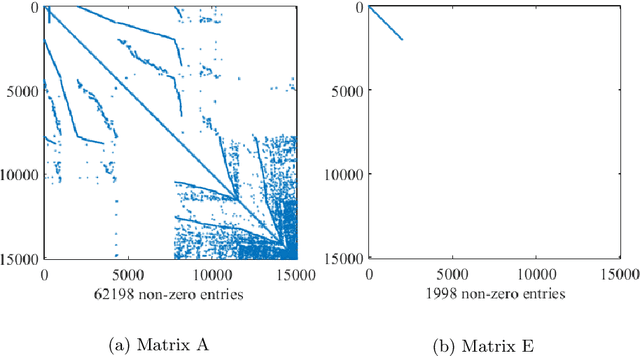

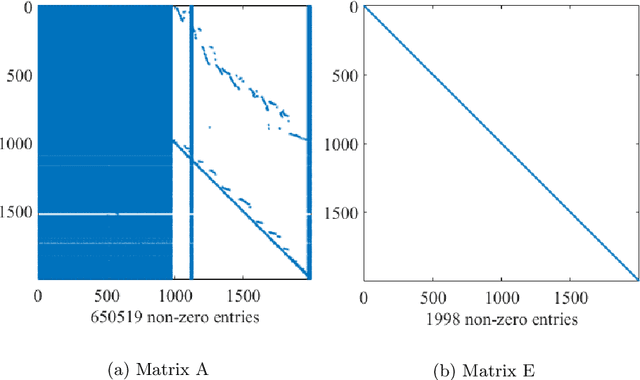

Abstract:In this article, the objective is mainly focused on finding optimal control for the large-scale sparse unstable power system models using optimal feedback matrix achieved by the Riccati-based feedback stabilization process. Our aim is to solve the Continuous-time Algebraic Riccati Equations (CAREs) governed from large-scale unstable power system models, which are of index-1 descriptor systems with a sparse pattern. We propose the projection-based Rational Krylov Subspace Method (RKSM) for the computation of the solution of the CAREs, the novelties of RKSM are sparsity-preserving techniques and the implementation of time convenient recursive adaptive shift parameters. We modify the machine-independent Alternating Direction Implicit (ADI) technique based nested iterative Kleinman-Newton (KN) method and adjust this to solve the CAREs governed from large-scale sparse unstable power system models. We compare the results achieved by the Kleinman-Newton method with that of using the RKSM. The applicability and adaptability of the proposed methods are justified through the Brazilian Inter-Connected Power System (BIPS) models and their transient behaviors are comparatively analyzed by both tabular and graphical approaches.
Estimating Blood Pressure from Photoplethysmogram Signal and Demographic Features using Machine Learning Techniques
May 07, 2020Abstract:Hypertension is a potentially unsafe health ailment, which can be indicated directly from the Blood pressure (BP). Hypertension always leads to other health complications. Continuous monitoring of BP is very important; however, cuff-based BP measurements are discrete and uncomfortable to the user. To address this need, a cuff-less, continuous and a non-invasive BP measurement system is proposed using Photoplethysmogram (PPG) signal and demographic features using machine learning (ML) algorithms. PPG signals were acquired from 219 subjects, which undergo pre-processing and feature extraction steps. Time, frequency and time-frequency domain features were extracted from the PPG and their derivative signals. Feature selection techniques were used to reduce the computational complexity and to decrease the chance of over-fitting the ML algorithms. The features were then used to train and evaluate ML algorithms. The best regression models were selected for Systolic BP (SBP) and Diastolic BP (DBP) estimation individually. Gaussian Process Regression (GPR) along with ReliefF feature selection algorithm outperforms other algorithms in estimating SBP and DBP with a root-mean-square error (RMSE) of 6.74 and 3.59 respectively. This ML model can be implemented in hardware systems to continuously monitor BP and avoid any critical health conditions due to sudden changes.
 Add to Chrome
Add to Chrome Add to Firefox
Add to Firefox Add to Edge
Add to Edge